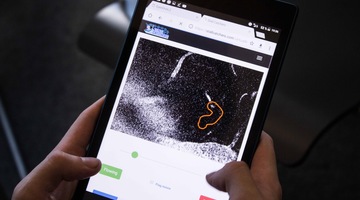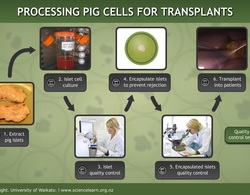

This unit plan is designed for students in years 6–8. When someone mentions the word ‘butterfly’, what image pops into your head? Chances are it’s the monarch or the white butterfly, as these are ...
READ MORE

Games have long been used for developing both skills and knowledge in the education sector. As digital technologies continue to develop, the range of digital learning games also continues to ...
READ MORE

The New Zealand Curriculum places strong emphasis on the social aspects of science within the nature of science strand, which includes a participating and contributing component. The objectives ...
READ MORE

What is the response of New Zealand consumers to genetically modified (GM) foods? Will they pay extra for genetically enhanced foods? Will they buy GM foods if they are cheaper than non-GM foods ...
READ MORE

Can farmers make a profit from growing genetically modified (GM) food crops? Economic modelling can be used to weigh up different factors that influence the profits that can be gained from ...
READ MORE

In this activity, students consider some of the ethical issues involved with keeping earthworms (and other animals) captive in a classroom setting. By the end of this activity, students should be ...
READ MORE

Aotearoa New Zealand has a developing space industry that employs people from around the motu. Our space industry encompasses: people who model atmospheric greenhouse gases and agricultural ...
READ MORE

Aotearoa New Zealand has one of the highest cat ownership rates in the world. Nearly 40% of households have at least one cat – for the most part, we’re fond of our cats. Unfortunately, domestic ...
READ MORE

Professor Andrew Allan, Principal Scientist at Plant & Food Research, explains why warming temperatures pose a risk for the horticulture industry and why we need new techniques to breed ...
READ MORE

This Plant & Food Research video explains how null segregants are bred. Modern breeding technologies are able to insert new DNA into a plant to create a desirable trait. Growers then use ...
READ MORE
Mammalian cell culture and transgenic cow technology are two different methods for producing human therapeutic proteins. Dr Goetz Laible compares these methods. Questions to consider Can you list ...
READ MORE

This interactive shows the techniques used to make transgenic animals at AgResearch in New Zealand. Molecular biology techniques such as restriction enzyme digests, ligation, tissue culture and ...
READ MORE

This interactive shows how scientists confirm a newborn calf is a transgenic animal. View the steps AgResearch scientists use to produce a transgenic cow in this related interactive.
READ MORE

An overview of the process used to make a pig cell transplant treatment for type 1 diabetes.
READ MORE